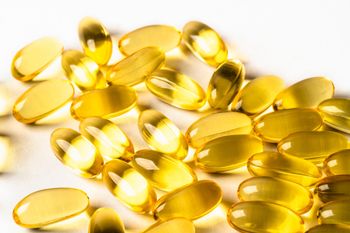
Food Chemicals Codex Revises Krill Oil, Stevia, Caffeine Standards
Krill oil, stevia, and caffeine are high-profile ingredients.
Revised monograph standards for krill oil, stevia, and caffeine are among the latest changes proposed for the Food Chemicals Codex (FCC) published by the U.S. Pharmacopeial Convention (USP). The FCC is a compendium of food ingredient quality standards. USP is calling for public comment on the proposed standards, published in the most recent
Krill oil, stevia, and caffeine are high-profile ingredients, with krill oil and stevia seeing growing demand worldwide and with regulatory scrutiny surrounding caffeine-containing energy beverages.
For krill oil, the latest monograph proposes tests-both qualitative (fingerprint) and quantitative-for measuring total phospholipid content, including key phospholipid phosphatidylcholine. (When the monograph was first proposed in 2010, public comments recommended that such tests for phospholipids be included.) Krill phospholipids contain omega-3 fatty acids DHA and EPA, which have been linked to such health benefits as cardiovascular, joint, women’s, and brain health.
For stevia, the revised monograph is said to provide “a more simplified approach for separating and measuring all nine glycosides present in the stevia leaf.” This latest monograph-the first version was proposed in the FCC Forum in December 2011-includes these two new reference standards for stevia: the aforementioned Steviol Glycosides System Suitability standard for identifying and measuring the individual glycosides, as well as an already existing USP monograph for high-purity Rebaudioside A. USP says both are addressed because in addition to Reb A, which was the first stevia-based sweetener used in the United States and Europe, many stevia products now include mixtures of different glycosides.
Finally, for caffeine, the FCC proposes a “more discriminating liquid chromatography test for both identity and quantitative determination of the purity of caffeine content.” Alluding to recent negative regulatory attention on energy drinks, USP states, “With the potential for closer regulatory scrutiny of products high in caffeine content following alleged adverse events and consumer group petitions, companies will need to be confident that they know with greater precision what they are incorporating into their products-and in what quantity.” USP says the new FCC analytical method is based on an equivalent method published in the caffeine monograph in the USP 35–NF 30, which is USP’s compendia for pharmaceutical and excipient standards.
“Public standards defining the identity, quality, and purity of ingredients incorporated into finished products can be an important resource for manufacturers as they source ingredients from suppliers around the world, offering some assurance that they are receiving the ingredients they expect by providing public specifications to which they can be compared,” said V. Srini Srinivasan, PhD, USP’s executive vice president of global science and standards. “While important for all ingredients, it is especially crucial for high-value ingredients, including those linked to health benefits such as krill oil and so-called natural ingredients such as stevia, which manufacturers and consumers pay a premium for and are in high public demand.”
Newsletter
From ingredient science to consumer trends, get the intel you need to stay competitive in the nutrition space—subscribe now to Nutritional Outlook.





